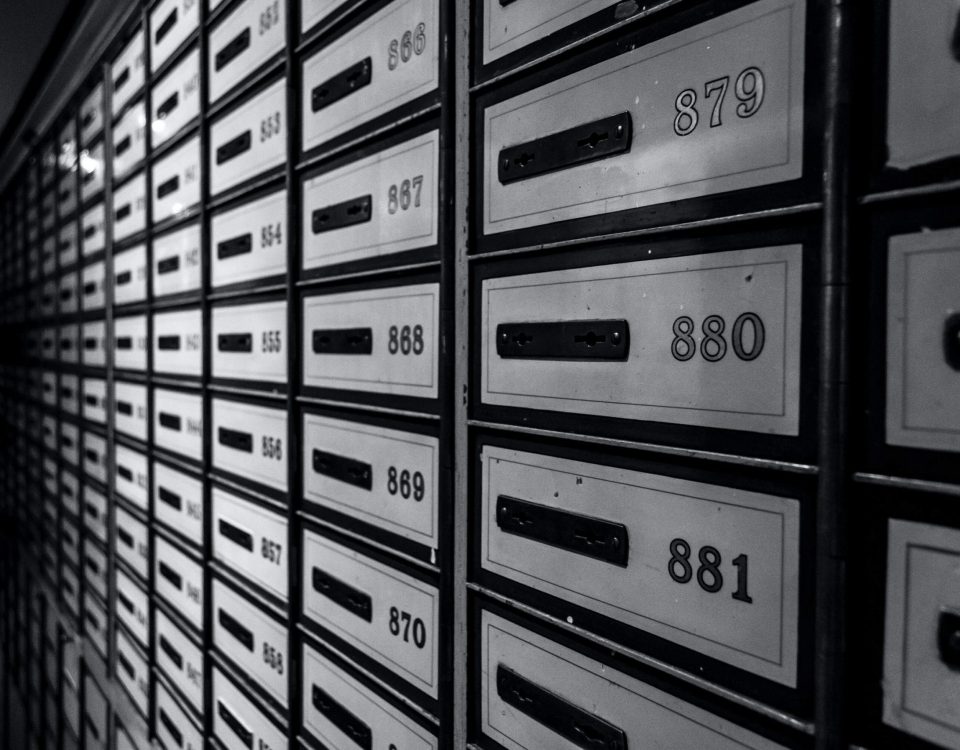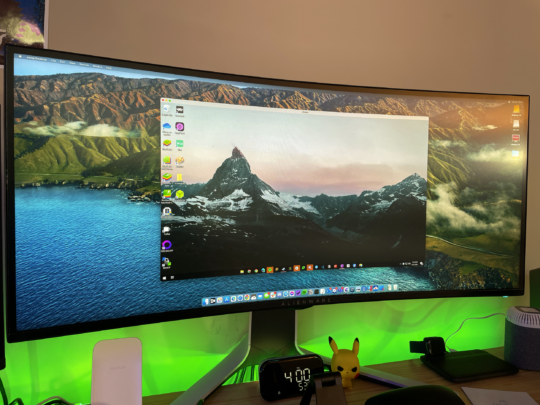
How-To Delete Selected Photos from All Apple Devices at Once
12 abril, 2021
How to Disable the Floating Screenshots Preview on Mac using macOS
12 abril, 2021How To Convert Video To Audio On Mac

In previous posts, I’ve covered how to safely download YouTube videos and upload Bandcamp music to your Apple Music library. Both of these posts have prepped us for today’s topic, which is how to convert video to audio on Mac.
Specifically, we’re going to be looking at how you can take an existing video file (generally using the .MP4 format) and turn it into an audio file (generally using the .MP3 format).
There are several reasons why you might find this useful. Maybe you have a video recording of a concert you attended and want to add the music to your Apple Music library. Or, maybe you’re making in GarageBand and want to incorporate audio from a video into your track.
In this post, you’ll learn how to do all of these things. Let’s get started!
Method 1: Convert video to audio using GarageBand
I’m going to be covering three different methods to convert video to audio. The first two are going to be Mac-specific; you won’t need to download any extra apps. The third will require third-party software that you probably already have and can get on Mac and PC for free.
You’ll probably notice that these methods are pretty similar and interchangeable. None are necessarily better than the others – it just comes down to what’s most convenient for you.
Let’s start with GarageBand.
1. Create an empty GarageBand project
GarageBand is the music creation app that comes with Mac natively. It’s free and (I believe) pre-installed on your Mac. If you don’t have it, you can download it for free from the Mac App Store.
To open GarageBand, press cmd + spacebar to bring up Spotlight search. Then, type “GarageBand” and press return.

The first thing you’ll see is a screen asking you to create an Empty Project.

Go ahead and double-click the Empty Project icon. Once you do that, a new screen will appear.

Here, we’re going to click the icon with a microphone on it. If you read the text on this one, you’ll see drag and drop audio files, which is what we’re going to be doing.
2. Move your video file to GarageBand
You should now be looking at a screen that looks something like this:

In a separate window, open Finder and navigate to your video file. Mine is on the Desktop, as you can see below.

Once you’ve navigated to your video file, drag and drop it onto the track section of GarageBand, like so:

When you drop the file in GarageBand, you’ll see a new audio track appear in GarageBand, as well as a popup window containing the video. You can close out of the popup.

3. Trim the audio as needed
With the video file now appearing as an audio track in GarageBand, you have an opportunity to trim it as you see fit. You can cut out the intro, outdo, fade it in or out, or if you’re more experienced, remix it to your heart’s content.
If you’ve never used GarageBand and have no clue what you’re doing, here are the basics of trimming:
- Use two fingers on your trackpad (or the touch-based scrolling on your Apple Mouse) to scroll left to right on the audio track.
- Click on the audio track to select it.
- At the top of the audio track, you’ll see numbers with increments between them, similar to a ruler. When you hover your mouse here, the mouse icon will change to two arrows facing away from each other.
- This area above the track is the timeline. Wherever you click is where the playhead will move. Click anywhere in the timeline and press the play button in the top-left of the screen.

- To trim your audio, move the playhead to the point in the track where you want to split the audio. You can use the arrow keys on your keyboard to pick a more precise point.
- Once in position, right-click the track and choose Split at Playhead. This will split the track at the point you positioned the playhead.

- Next, right-click the portion of the track you want to get rid of and select Delete. This will remove it from the track altogether.
- If there’s a space in the middle of your track that you want to get rid of (i.e., not at the beginning or end), just split the track at the beginning and end of the section you want to delete. Then, right-click and delete the segment in the middle.
Again, this bit is optional! If this sounds too complicated, you can skip it and just export the entire track. Also, this won’t change the original video file. You can delete as much of this audio track as you want without damaging your video.
4. Export as an audio track
Alright, now that we’ve added the audio from our video file to GarageBand and trimmed it to our liking, we’re ready to convert video to audio. All you need to do from this point is export the audio track in the audio format of your choosing.
First, though, we want to make sure that the metronome isn’t playing in the background. I can’t tell you how many times I’ve accidentally exported a track this way, only to find that the metronome is ticking in the background of the track. To turn this off, just toggle the metronome button at the top of the screen.

With that out of the way, let’s get to exporting!
Click the portion of the track you want to export. If you didn’t do any editing, then that will just be the entire track.
Once selected, click Share in the Menu Bar, then Export Song to Disk.

In the popup that appears, you’ll see options to name the track, choose a file format, and a location to save the audio file. I usually like to save it to my Desktop for simplicity.

When choosing a file format, here are the considerations to keep in mind:
- MP3 is the standard. It’s a small file and compatible with everything, though it degrades over time and doesn’t offer the best audio quality.
- AAC has improved audio quality over MP3, but will still degrade over time and is slightly less compatible.
- AIFF is a high-quality format developed by Apple. It won’t degrade over time, but has limited compatibility and takes up significantly more storage space.
- WAVE is comparable to AIFF, though designed for and by Microsoft.
Once you have the settings to your liking, click Export.
And that’s it!
Method 2: Convert video to audio with built-in encoding
Alright, now we’re going to get into a much more straightforward method. Unlike the other methods in this post, this doesn’t require any third-party apps. Just a video file downloaded to your Mac.
First, navigate to the video file you want to create an audio track from.

Right-click the video file and choose Encode Selected Video Files from the dropdown menu.

In the popup window that appears, choose Audio Only from the Setting: dropdown menu, then click Continue.

When you do this, you’ll get a .m4a audio file of your video.

You can add this file to your Apple Music library via drag-and-drop, convert it to a different format using the steps above in GarageBand, or do whatever else you like with it.
And that’s it!
Method 3: Use VLC to convert video files to audio files
Next up, we’re going to use the popular VLC app to convert video to audio on Mac. This method is going to be extremely similar to the method used in the GarageBand steps, and I wouldn’t say it’s any better or worse. It’s just different, so if you don’t have this app installed on your Mac I recommend sticking with GarageBand.
1. Move your video file to VLC
To open the VLC app, press cmd + spacebar, type “VLC”, then press return.

Once opened, you should be looking at the following screen:

To convert video to audio with this app, click File in the Menu Bar, then Convert/Stream.

Drag and drop your video file over the big upside arrow in the new window that appears.

2. Export as an audio file
In the Choose Profile dropdown menu, choose any file format that starts with Audio –. I recommend MP3 if you don’t know which to choose, and FLAC if you want the best audio quality. Just know that Apple Music doesn’t support FLAC audio files. If you save it in this format, you won’t be able to add the file to your Apple Music library.

Once you’ve chosen your file format, click Save as File, Browse…, and name the file. Make sure you add the file extension to the end of the name of your file, or else it won’t export properly (.MP3, .FLAC, etc.).
Next, choose the folder you want to save it to (I recommend Desktop, so you don’t lose it), then click Save to close this window, then Save again at the bottom of the other window.
After a few seconds, the file should appear in the folder you chose to export it to.
And that’s it! That’s how to convert video to audio using VLC on Mac.
Want to learn more tips and tricks for your Mac?
Now that you know how to convert video to audio on Mac, you just became that much more of a power user. For more tips and tricks on getting the most out of your Mac, check out the rest of the AppleToolBox blog.
See you next time!







